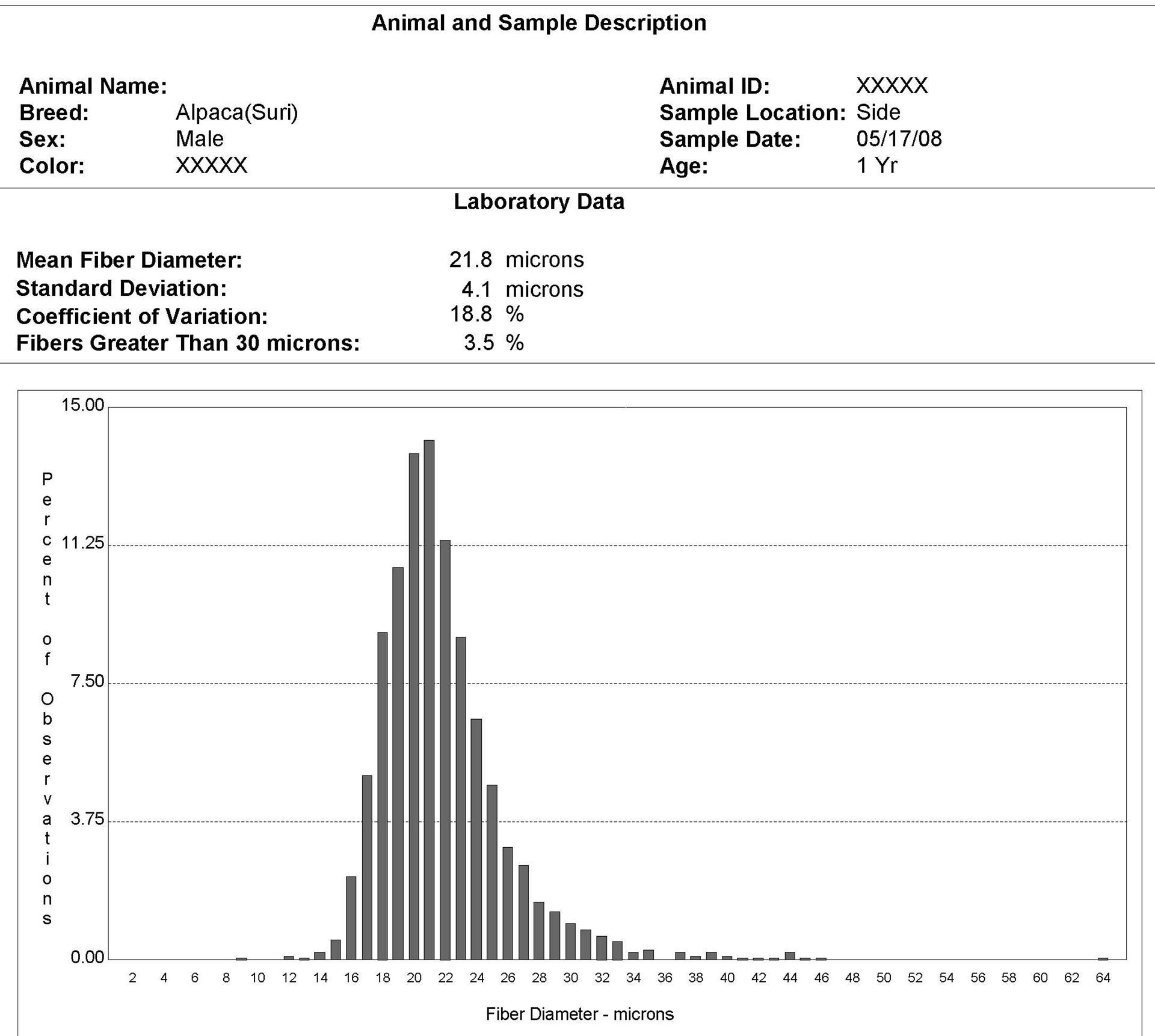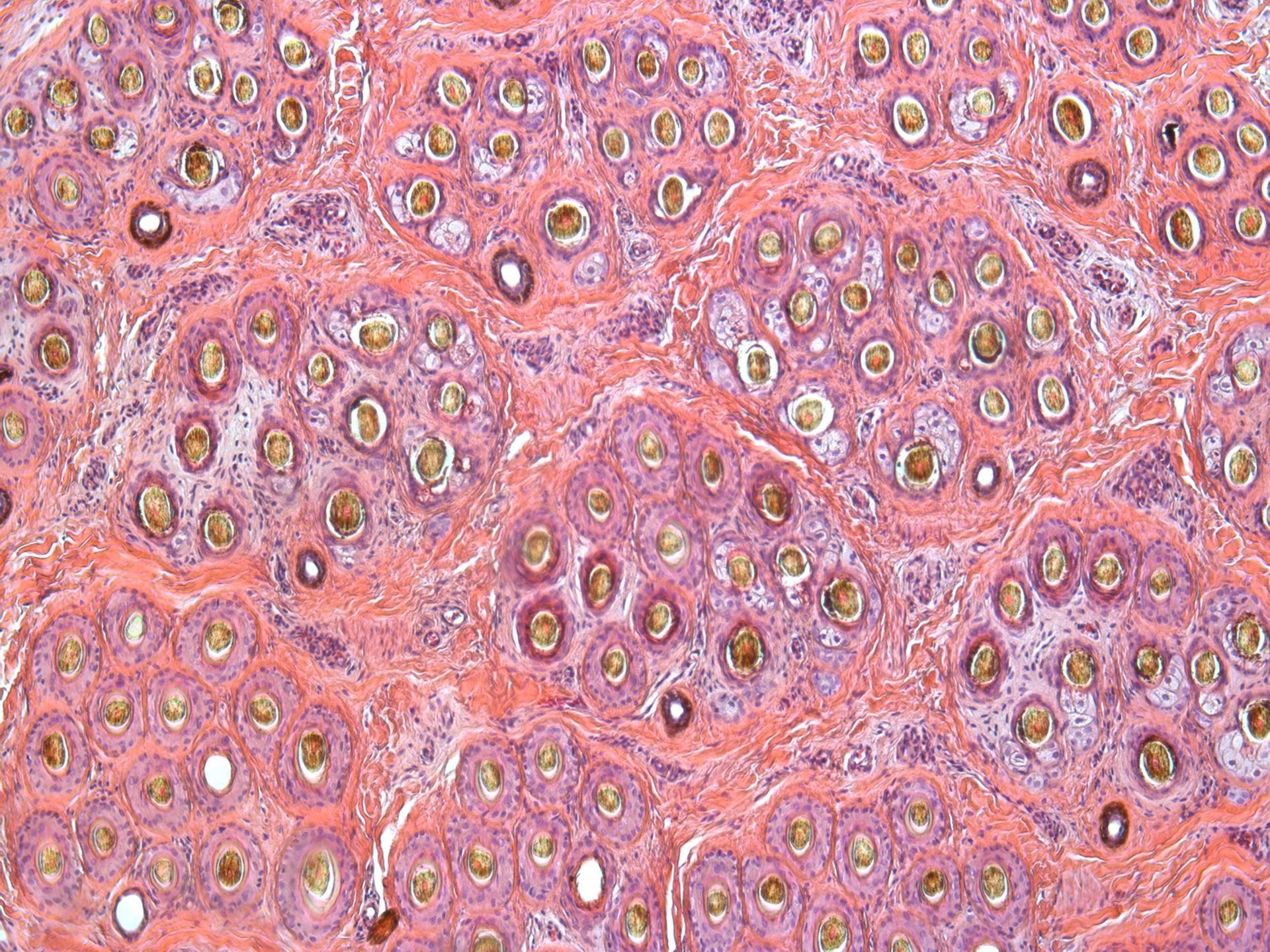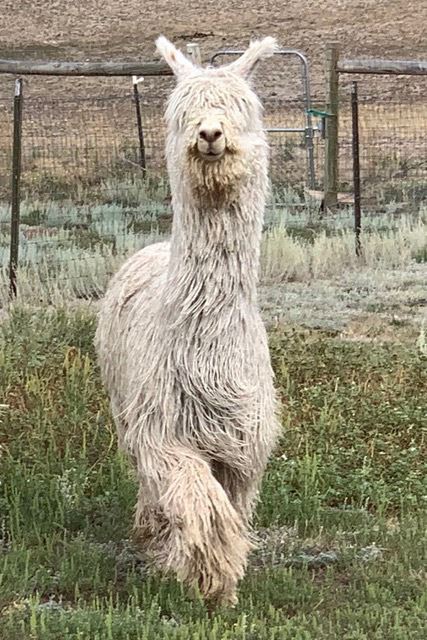SURI SCIENCE Since the Suri Alpaca is a new form of livestock to the United States, there hasn't been much research directly related to them, but owners have still been able to take advantage of different tools from other livestock to improve their herds. Some additional methods described here have been developed within our industry. |
|
HISTOGRAMS:
As you learn more about Suris and talk with Suri alpaca owners, you might hear them refer to histogram tests of an alpaca's fiber. A histogram is done with special fiber optical equipment that measures the diameter of individual fibers. After measuring hundreds of the fibers in a sample, analysis is done to determine averages, and how much variation there is in the sample.
histogram is done with special fiber optical equipment that measures the diameter of individual fibers. After measuring hundreds of the fibers in a sample, analysis is done to determine averages, and how much variation there is in the sample.
The alpaca owner clips a sample of fiber from the mid-side of their alpaca's blanket at sends it for analysis. The owner receives a graphic representation of the micron spread of their alpaca's fiber. Additionally the owner is provided with a number of specific results:
- Average Fiber Diameter (AFD): This is measured in microns (1/1000 of a millimeter) and is one of the most important measurements in our fiber industry. Lower micron counts (below 20) represent a finer fleece which is more comfortable against the skin. As fiber coarsens, it feels less comfortable and can have what is referred to as prickle factor when the fibers get coarser than 30 micron.
- Standard Deviation of Fiber Diameter (SD): SD represents the variation of fiber diameter across the sample. Breeders strive for fleeces with little variation in fiber diameter for that provides a more uniform product that feels nicer and is more predictable in its use. The smaller the standard deviation the more uniform the fiber.
- Coefficient of Variation (CV): is the standard deviation expressed as a percentage of the sample's average. A lower CVD is better for it indicates less variation in fiber diameter.
- Percent Medullated Fibers (%M) – Medullation, or the occurrence of a hollow core or hollow sections within the individual fibers, can only be measured for white or very light colored fleeces. Medullation is important because it affects the fiber's ability to take dye and how well it flexes under pressure which affects prickle.
- Spin Fineness (SF): This provides an estimate of the performance of the fiber when it is spun into yarn. It is micron and CVD expressed as a single value in microns, to represent spinning quality.
- Comfort Factor (CF): This score represents the percentage of fibers in a sample that were under 30 micron. Those breeding alpacas should be aiming for comfort factors of 100% in their alpacas' fleeces.
- Percentage of Fibers Greater Than 30 micron: Is the opposite of Comfort Factor. Breeders want this number to be zero.
- Fiber Curvature or Mean Curvature: This measurement does not apply to Suri alpacas. It is a measurement of how much a fiber bends over 1 mm. This is a trait of importance in huacaya alpacas.
- Length Standard of Variation (SDL): The sample fibers are measured for length and the variation in length is calculated. It is a measure (mm) of the dispersion of staple lengths either side of the average staple length.
- Length Coefficient of Variation (CVL): is the standard deviation expressed as a percentage of average staple lengths.
SKIN BIOPSIES: 
Another test some Suri owners perform on their breeding stock is a skin biopsy. A small plug of skin is taken from the alpaca's side and sent for analysis using a microscope. This test helps to determine the number of follicles- the hair growing cells in the skin- that a Suri alpaca has. The higher the number of follicles, the better, for more follicles equates with more fleece and ultimately more money in the pocket of the producer.
ALPACA COAT COLOUR TEST:
The Alpaca Coat Colour Test has been developed in collaboration with Dr. Kylie Munyard from Curtin University of Western Australia, who has conducted extensive research in the area of alpaca coat colour genetics. Coat colour in Alpacas is a complex trait, involving two main genes responsible for base coat colour (AslP and MCIR), and an as yet unknown number involved with pattern. Alpaca fleece has 22 natural shades that range from black to white, grey, fawn to champagne. Breeding for a specific coat colour can be a complex process. The ‘classic grey’ phenotype can be problematic in breeding due to its association with the blue eye white phenotype & associated possible health defects. Classic grey can be hidden or cryptic on white or light backgrounds. With the release of the Alpaca Coat test, breeders have the opportunity to test their white or light fawn animals, those with uncertain patterns or mutations, or animals they wish to determine the base coat colour to deduce common progeny colours. The test also identifies animals with ‘cryptic grey’ coat patterns that are generally too pale to see.
EPDs:
Expected Progeny Differences is certainly a mouthful, but the information provided is invaluable. This tool has been available to other livestock species to make dramatic improvements from one generation to the next. EPDs are computer generated predictions of how a dam or sire will impact certain measurable characteristics in their cria and future generation. EPDs are achieved by inputting measurements taken of an individual animal, combining its data with the data of its relatives that are already in the system, and doing computer analysis of the combined data. Over time and with the addition of more and more cousins and siblings, the computer program is able to help the breeder predict the impact an individual alpaca might have on its offspring. The Suri Network has been strongly encouraging its members to participate in the EPD program that the Alpaca Owners Association maintains. This program uses histogram (see above) data that is collected directly from the companies that perform those tests, as well as data provided by the owner for fleece weight and birth weight.
livestock species to make dramatic improvements from one generation to the next. EPDs are computer generated predictions of how a dam or sire will impact certain measurable characteristics in their cria and future generation. EPDs are achieved by inputting measurements taken of an individual animal, combining its data with the data of its relatives that are already in the system, and doing computer analysis of the combined data. Over time and with the addition of more and more cousins and siblings, the computer program is able to help the breeder predict the impact an individual alpaca might have on its offspring. The Suri Network has been strongly encouraging its members to participate in the EPD program that the Alpaca Owners Association maintains. This program uses histogram (see above) data that is collected directly from the companies that perform those tests, as well as data provided by the owner for fleece weight and birth weight.
EPDs track:
- Average Fiber Diameter (AFD)
- Standard Deviation of Fiber Diameter (SD)
- Spin Fineness (SF)
- Percentage of Fibers Greater than 30 Microns (%F>30)
- Mean Curvature (MC)
- Standard Deviation of Mean Curvature (SDMC)
- Percent Medullated Fibers (%M)
- Mean Staple Length (MSL)
- Fleece Weight (FW)
- Birth Weight (BW)

